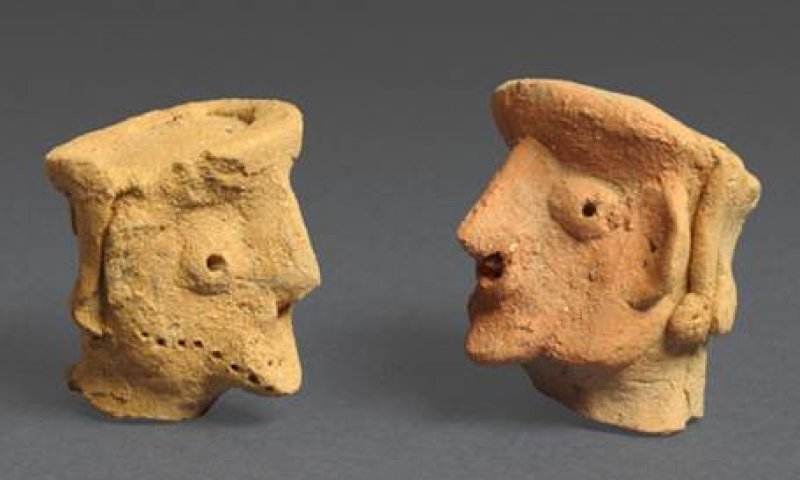
Temple and sacred vessels from Kingdom of Judah times found in Tel Motza
Temple and a rare cluster of ritual vessels from the times of the Kingdom of Yehudah were found in Tel Motza, west of Jerusalem • The findings, of about -2750 years, are rare testimonies
- Nachman Gur, Behadrey Haredim
- י"ד טבת התשע"ג

In excavations conducted by the Israel Antiquities Authority recently at the archaeological site of Tel Motza west of Jerusalem, before the works for the new Road #1 that would lead from Sha'ar Hagay to Jerusalem, a temple and cluster of ritual vessels of about 2750 years was revealed. The findings are a rare testimony to the nature of religious life in the early days of the Kingdom of Yehudah.
"The ritual structure in Tel Motza is an unusual finding highlighted by the almost complete absence of ritual structures during the existence of the First Temple," said Anna Eirikh, Dr. Hamoudi Khalaila and Shua Kisilevitz, directors of the excavation on behalf of the Israel Antiquities Authority. "The uniqueness of the building is even more striking due to its proximity to the capital Jerusalem. "According to the researchers, "among others, clay figurines of men, one bearded, were found, whose meaning is still unknown."
IAA indicate that Tel Motza is known as an area of archaeological importance of first priority. In the past, many remains were exposed at the site belonging to different periods. During the 90's and early 2000's the site was excavated as part of planning the new route of Highway 1. Site diggers then offered to re-identify the place with the biblical village 'Motzah', mentioned in the Book of Joshua – a city in the land of Benjamin on the border of Judah. This proposal was based, inter alia, on the disclosure of findings which emphasized the importance of the site in the directorate of the Kingdom of Yehudah during the First Temple.
Among other things, a public building, large warehouse buildings and a large number of grain silos were found. According to them, the site was used to store grain in Jerusalem, and was run by a clerical dignitary.
In the current excavation evidence which add another dimension to understanding the site was uncovered. According to archaeologists, the current excavation revealed part of a large structure – from the early days of the monarchy. In the Temple courtyard a square building, probably an altar, was discovered, and nearby was a compendium of sacred vessels. A set of tools that includes pottery with the nature of worship, including bowls on a high base used in the rituals of worship, decorated worship pedestals, and a number of clay figurines of two types: the first, the heads of tiny figurines in human form (anthropomorphic icons) with a flat head covering and curly hair; the second - figurines of animals (zoomorphic) - mainly of drawn cattle.
The excavators emphasize: "the finding of the ritual structure including the many ritual vessels which were discovered, especially the coastal influence visible in the anthropomorphic icons, still require extensive research."
תגובות
{{ comment.number }}.
הגב לתגובה זו
{{ comment.date_parsed }}
{{ comment.num_likes }}
{{ comment.num_dislikes }}
{{ reply.date_parsed }}
{{ reply.num_likes }}
{{ reply.num_dislikes }}



הוספת תגובה
לכתבה זו טרם התפרסמו תגובות